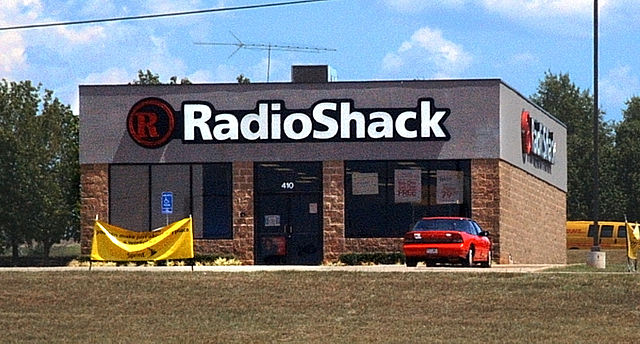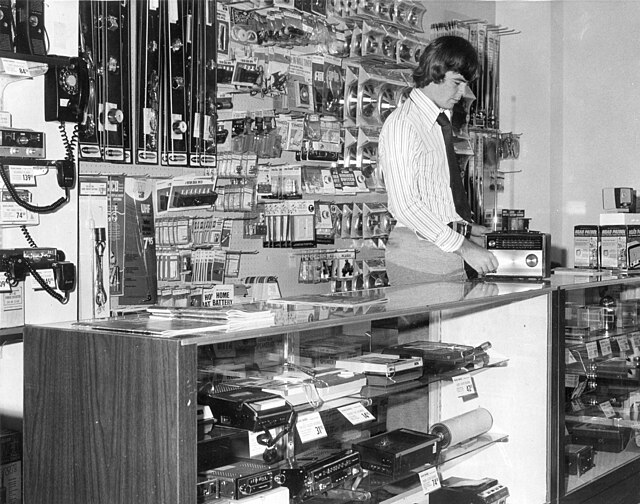RadioShack, formerly known as Radio Shack, is a name that resonates with electronics enthusiasts and consumers alike. This iconic brand has a rich and storied history that spans over a century, filled with innovations, transformations, and resilience. From its origins as a mail-order business for amateur radio enthusiasts to its current status as an e-commerce powerhouse, RadioShack has navigated the ever-changing landscape of technology and retail. In this comprehensive article, we’ll delve deep into the fascinating journey of RadioShack, from its inception to its present status.
The Birth of RadioShack: Early 20th Century
RadioShack’s story begins in the early 1920s when two enterprising brothers, Theodore and Milton Deutschmann, founded the company in Boston, Massachusetts. The Deutschmanns recognized the burgeoning interest in amateur radio, also known as ham radio, and saw an opportunity to provide equipment and components to radio enthusiasts.
The first RadioShack store opened its doors on Brattle Street in downtown Boston. The name “Radio Shack” was chosen, inspired by the term for a small structure that housed a ship’s radio equipment. This name was suggested by an employee named Bill Halligan and became synonymous with the brand.
The company’s first catalog was issued in 1939, marking its entry into the high-fidelity music market. As RadioShack expanded its offerings, it began selling its own private-label products under the brand name Realist, later changed to Realistic. This shift laid the foundation for the company’s future as a retailer of electronic components and consumer electronics.
The Tandy Era: Transforming RadioShack (1960s-1980s)
In 1962, RadioShack underwent a significant transformation when it was acquired by Tandy Corporation, a leather goods company. Under the leadership of Charles D. Tandy, the company’s focus shifted towards electronics and hobbyist-related businesses.
Tandy saw the potential of RadioShack in serving electronics hobbyists and enthusiasts. The company began to create smaller, knowledgeable stores staffed with electronics experts. This shift in strategy involved closing unprofitable mail-order operations, eliminating credit purchases, and reducing management positions.
Its inventory was streamlined from a vast array of products to focus on private-label brands and essential components. Tandy’s strategy aimed to “identify the 20% that represents 80% of the sales,” making RadioShack more efficient and customer-centric.
By 1977, RadioShack introduced the TRS-80, one of the first mass-produced personal computers. This pre-assembled system, available through a nationwide retail chain, marked a significant milestone in the personal computer revolution. The TRS-80’s success was followed by the TRS-80 Color Computer in 1980, designed to connect to televisions.




RadioShack The Retail Giant and Challenges (1980s-1990s)
By the early 1980s, RadioShack had become a retail giant with over 4,300 stores and more than 2,000 independent franchises. It had also diversified into various product lines, from electronics to computer software, wire and cable, and even personal computers.
However, the 1990s brought challenges. RadioShack’s proprietary 8-bit computers faced stiff competition, leading to the exit from computer manufacturing. The company experimented with rebranding attempts, including “Incredible Universe,” but many proved unsuccessful.
In 1994, they launched the “Fix 1500” initiative, aiming to address inventory and profitability issues. The program targeted the lowest-graded store managers, emphasizing the need for improvement.
As the 21st century approached, it shifted its focus toward wireless sales, leveraging the popularity of mobile phones. However, the rise of e-commerce and changing consumer buying habits posed significant challenges. The traditional forte of RadioShack, electronic components, and parts, began to dwindle.
RadioShack’s Rebranding and Decline (2000s-2010s)
In May 2000, RadioShack underwent a significant transformation by dropping the “Tandy” name, rebranding itself as RadioShack Corporation. This pivotal change marked the company’s intent to venture into new territory, primarily focusing on the booming market for wireless phones. They aimed to directly compete with retail giants like Best Buy and Walmart, aiming to capture a larger share of the rapidly growing mobile device market.
To bolster its product lineup and revitalize its offerings, they introduced house brands, such as Realistic and Optimus. These brands represented an attempt to reassert their presence and relevance in the consumer electronics industry. While these endeavors breathed fresh life into the company’s product range, they also exposed RadioShack to heightened competition from both traditional electronics retailers and online marketplaces.
In 2005, they made a bold move by rebranding itself as “The Shack.” This shift in branding was an attempt to appeal to a younger, tech-savvy demographic and reposition itself as a contemporary technology hub. The “The Shack” campaign, with its catchy slogan, “You’ve got questions, we’ve got answers,” resonated with consumers and successfully boosted mobile product sales. However, this strategic pivot came at a price, as it led to a gradual erosion of the core components business that had been a hallmark of RadioShack’s identity for decades.
Despite its efforts to adapt to a changing retail landscape and evolving consumer preferences, they encountered formidable challenges. The rapid rise of e-commerce, coupled with the allure of online shopping, posed a significant threat to its traditional brick-and-mortar model. Furthermore, the company found itself collecting increasing amounts of customer data for marketing purposes, a practice that raised privacy concerns and strained customer relations.
By 2011, a pivotal shift had occurred within RadioShack’s revenue streams. Smartphones, rather than electronic components, had risen to dominate the company’s earnings. The strategic focus on mobile sales had the unintended consequence of leaving other customers, particularly those seeking assistance with technical projects or electronic components, feeling neglected. This shift signaled a fundamental transformation in its customer base, with traditional do-it-yourself enthusiasts gradually taking a backseat to consumers seeking the latest mobile devices and accessories.
These challenges marked a critical juncture in their history, as the company grappled with finding its footing in an evolving industry landscape while striving to maintain its legacy as a trusted electronics provider.
RadioShack’s Present Status and New Ownership (2023)
As of 2023, RadioShack operates primarily as an e-commerce website, marking a significant departure from its heyday as a brick-and-mortar retail giant. The company has adapted to the changing consumer landscape, where online shopping has become the norm. While RadioShack maintains a digital presence through its e-commerce platform, it also has independently owned and franchised stores, showcasing a hybrid approach to retail.
In addition to its e-commerce operations, RadioShack has found a niche by supplying parts for HobbyTown USA. This strategic move aligns with its historical expertise in providing electronic components, catering to hobbyists, makers, and tech enthusiasts who require specialized parts and equipment.
One of the most notable developments in their recent history occurred in May 2023 when the brand was acquired by the Unicomer Group, a company based in El Salvador. Unicomer Group is renowned as one of the largest franchisors of RadioShack, with a widespread presence in El Salvador, Central America, South America, and the Caribbean. This acquisition signified a shift in their ownership and management, bringing it under the umbrella of a company with a strong regional and international presence.
RadioShack’s enduring legacy is rooted in its remarkable ability to adapt and evolve within a rapidly transforming industry. From its pioneering days in the personal computer market to its evolution into a trusted source for mobile phones, RadioShack has reinvented itself multiple times to remain relevant and innovative.
RadioShack’s journey through time, technology, and transformation serves as a testament to its resilience and adaptability. Over the past century, this iconic brand has navigated through numerous challenges, from shifts in consumer preferences to technological revolutions. While its retail presence has undergone significant transformations, but their enduring legacy remains intact.
RadioShack continues to hold a special place in the hearts of electronics enthusiasts, hobbyists, and consumers who have witnessed its evolution. It is a symbol of innovation and adaptation in the world of electronics and consumer technology. As we reflect on their storied history, we find a company that embodied the spirit of innovation, consistently leaving an indelible mark on the retail and technology landscape. Despite the changing tides of commerce, their ability to stay afloat and redefine itself stands as a remarkable testament to its enduring legacy.



